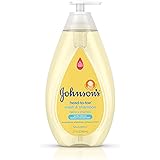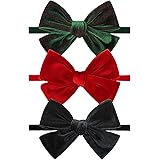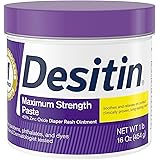Navigating the vast world of baby products, especially when trying to protect your little one from potential toxins, can often feel incredibly overwhelming. In fact, many parents express frustration when attempting to decipher complex ingredient lists and marketing claims, often getting lost in a sea of supposedly “non-toxic” baby wipes. This challenge is compounded by the concerning reality that numerous common baby wipes contain ingredients known as endocrine disruptors, substances capable of interfering with hormonal balance in developing bodies. Furthermore, a significant number of these wipes are manufactured from petroleum-derived plastic materials, inevitably releasing microplastics into the environment and onto delicate skin.
The expert toxicologist in the accompanying video sheds light on these critical issues, providing invaluable guidance on selecting the safest baby wipes available. Evidence consistently shows that early exposure to certain chemicals can lead to long-term health concerns, potentially impacting development well into adulthood, including phenomena like early puberty. Therefore, understanding which products truly prioritize your baby’s health and which contain hidden dangers becomes paramount for conscientious parents. This guide expands on the video’s insights, offering a deeper dive into the world of non-toxic baby wipes and empowering you to make informed decisions.
Understanding the Hidden Dangers in Baby Wipes
The quest for truly safe baby wipes often begins with understanding the risks posed by conventional options. One of the most significant concerns revolves around endocrine-disrupting chemicals (EDCs), which are ubiquitous in many household products, including baby wipes. These compounds mimic or block natural hormones, potentially disrupting the intricate systems that regulate growth, metabolism, and reproduction. For instance, even minute exposures during critical developmental windows can have profound and lasting effects on a child’s health.
Beyond chemical composition, the physical material of most baby wipes presents another often-overlooked threat: microplastics. These tiny plastic particles, typically less than five millimeters in size, are shed from synthetic fibers like polyester found in many conventional wipes. Once released, microplastics can persist in the environment for hundreds of years, contaminating ecosystems and potentially accumulating in human bodies. Consequently, when a baby wipe containing these materials is used, microplastics can transfer to the baby’s sensitive skin, with unknown long-term implications for health.
Why Ingredient Scrutiny is Essential for Parental Peace of Mind
The term “non-toxic” is frequently used in marketing, yet it lacks a universally agreed-upon legal definition, leading to widespread greenwashing. This practice involves companies misleading consumers into believing their products are more environmentally friendly or safer than they actually are. For parents diligently seeking the best for their children, this marketing tactic can create immense confusion and a false sense of security.
Learning to read and interpret ingredient labels is thus an indispensable skill for modern parenting. Many ingredients with innocuous-sounding names can conceal concerning chemical structures or manufacturing processes. Understanding the specific red-flag ingredients empowers parents to look beyond brand claims and make purchasing decisions based on verified facts. This proactive approach ensures that product choices align with a commitment to minimizing exposure to harmful substances for your baby.
Key Ingredients to Avoid in Baby Wipes
When selecting baby wipes, a careful review of the ingredient list can help parents identify and avoid potentially harmful substances. The following chemicals are frequently cited by toxicologists as ingredients of concern due to their potential health impacts:
-
PEG-40 Hydrogenated Castor Oil: This ingredient, often used as an emulsifier and solubilizer, is a petroleum derivative. Petroleum-based ingredients can sometimes be contaminated with 1,4-dioxane, a probable human carcinogen, and can contribute to concerns regarding petrochemical production.
-
Benzalkonium Chloride (BAC): Primarily used as a preservative, BAC is a quaternary ammonium compound. Concerns around BAC include its potential as an endocrine disruptor and its role as a contact allergen, capable of causing skin irritation, especially in sensitive areas.
-
Benzethonium Chloride: Chemically related to benzalkonium chloride, benzethonium chloride also functions as an antimicrobial agent and preservative. It shares similar concerns regarding endocrine disruption and skin sensitization, making it another ingredient best avoided for infant use.
-
Propylene Glycol: Commonly found in many personal care products, propylene glycol acts as a humectant and solvent. While generally recognized as safe in small amounts, it is a known contact allergen for some individuals and can cause skin irritation or allergic reactions, particularly in the delicate diaper area.
-
Silicone Quaternium-17: Silicones are often used for their conditioning properties, but certain quaternium compounds, including Silicone Quaternium-17, raise environmental and potential health concerns. Some quaternium compounds have been linked to irritation and toxicity, although research is ongoing.
-
Laureth-9: This ethoxylated ingredient functions as a surfactant and emulsifier. The process of ethoxylation can produce 1,4-dioxane as a byproduct, a substance linked to cancer and organ toxicity. Therefore, Laureth-9 serves as a potential indicator of this contaminant.
Top Expert-Recommended Non-Toxic Baby Wipes for Online Purchase
For parents seeking truly non-toxic and sustainable options, the market offers several commendable choices available primarily online. These brands have been evaluated for their commitment to using minimal, safe ingredients and environmentally responsible materials.
EcoWave Unscented Baby Bamboo Wipes: These wipes stand out for their simplicity and sustainability. Comprising just six ingredients, they are unscented and free from any red-flag chemicals, offering peace of mind for sensitive skin. Made from bamboo, a rapidly renewable resource, EcoWave also boasts an attractive price point, typically around six cents per wipe, making them an accessible eco-friendly option.
Eco Originals New Zealand Purified Water Wipes: Crafted from biodegradable and sustainable bamboo fibers, Eco Originals prioritize purity with a very short ingredient list. These wipes contain no ingredients of concern, aligning with the highest standards for non-toxic baby care. While their cost comes in at approximately twelve cents per wipe, and delivery times can be longer due to international sourcing, planning ahead allows access to these premium wipes.
Eco by Naty Unscented Baby Wipes: This brand is highly regarded for its compostable and EcoCert-certified wipes, signifying adherence to strict environmental and social standards. Notably, they are made with reverse osmosis purified water, a process that removes contaminants, making it ideal for sensitive applications. At about six cents per wipe, Eco by Naty offers an excellent balance of safety, sustainability, and affordability, particularly appealing for conscious consumers.
Mustela Organic Cotton Water Wipes with Aloe: Featuring organic cotton and natural plant fibers, Mustela’s wipes appeal to those seeking natural components. The inclusion of organic aloe vera provides a soothing element, and their ingredient list is commendably minimal. However, despite claims of organic cotton, the absence of third-party certifications like GOTS (Global Organic Textile Standard) means verification of organic status remains unconfirmed. Priced at approximately twelve cents per wipe, these wipes are also recognized as less sustainable due to cotton’s resource-intensive cultivation.
Decoding “Non-Toxic”: Baby Wipes to Approach with Caution
Even products marketed with terms like “pure” or “natural” can sometimes contain ingredients that fall short of toxicologist recommendations. Understanding these nuances is crucial to avoid common pitfalls in the baby wipe aisle.
Pampers Pure: Despite its “Pure” branding and claims of organic cotton, a closer look at the ingredients or smart label reveals the presence of polyester as a wipe material. Polyester, a synthetic fiber, contributes to microplastic pollution and raises concerns about potential chemical exposure. Furthermore, Pampers Pure wipes contain PEG-40 hydrogenated castor oil, a petroleum derivative that many experts recommend avoiding due to potential contamination by harmful byproducts.
WaterWipes: Praised for being plastic-free and having a minimalist ingredient list of only three components, WaterWipes have gained popularity. Nevertheless, the grapefruit seed extract used as a preservative in WaterWipes has been frequently found to be contaminated with benzalkonium chloride. This contaminant, an endocrine disruptor and contact allergen, makes these wipes less ideal, especially for use around a baby’s face or mouth, where ingestion is possible.
Dyper Brand Wipes (Newborn, Regular, Charcoal-infused): While admirable for being made from bamboo and plastic-free, Dyper wipes also utilize grapefruit seed extract, inheriting the same benzalkonium chloride contamination concern as WaterWipes. Additionally, these wipes contain benzethonium chloride, a related chemical with similar red flags for endocrine disruption and skin sensitivity. The presence of propylene glycol, a known contact allergen, further adds to the list of ingredients to avoid in a baby’s sensitive diaper area. The charcoal infusion, often highlighted, is frequently considered a marketing gimmick with no proven benefits for baby hygiene.
Coterie Wipes: Coterie wipes are free from petroleum-derived plastic materials, which is a positive step. However, they incorporate several ingredients that raise flags for toxicologists. Specifically, silicone quaternium-17, silicone-based compounds, and laureth-9 are present. Laureth-9 is particularly concerning because it is often synthesized using a process that can result in contamination with 1,4-dioxane, a carcinogen. Such ingredients are unequivocally not recommended for products applied to a baby’s delicate skin.
Honest Brand Unscented Clean Conscious Wipes: A Better In-Store Option
When shopping in physical stores or when in a pinch, finding truly non-toxic wipes can be challenging. The Honest Brand Unscented Clean Conscious Wipes present a reasonable alternative for these situations. They are commendably plastic-free, a significant step forward from many conventional options. While they may still contain some ingredients that are not perfectly ideal from a strict toxicologist’s perspective, these are generally not considered major red flags compared to the substances found in other widely available brands. Therefore, for convenience and relative safety, these wipes can serve as a functional choice.
The Safest, Most Sustainable, and Virtually Free Baby Wipe Alternative
Beyond commercial products, the absolute safest and most sustainable method for cleaning a baby’s bottom utilizes simple resources: an upcycled cotton t-shirt and plain water. This method, effectively a mini-bidet for babies, minimizes exposure to any chemicals, preservatives, or synthetic materials found in disposable wipes. Many parents globally, often without access to disposable wipes, successfully employ this simple and effective technique, highlighting its practicality and superior safety profile.
For solid messes, a quick preliminary wipe with a piece of toilet paper can manage the bulk, which can then be flushed. Subsequently, positioning the baby with their arms draped over your arm and their bottom angled over the toilet allows for a gentle rinse with water, ensuring all particles fall directly into the bowl. This method is particularly easy once your baby can hold their head up. After cleaning, the area can be patted dry or air-dried. This approach dramatically reduces waste, saves money, and ensures that only pure water touches your baby’s skin, representing the ultimate low-tox choice for baby hygiene.











